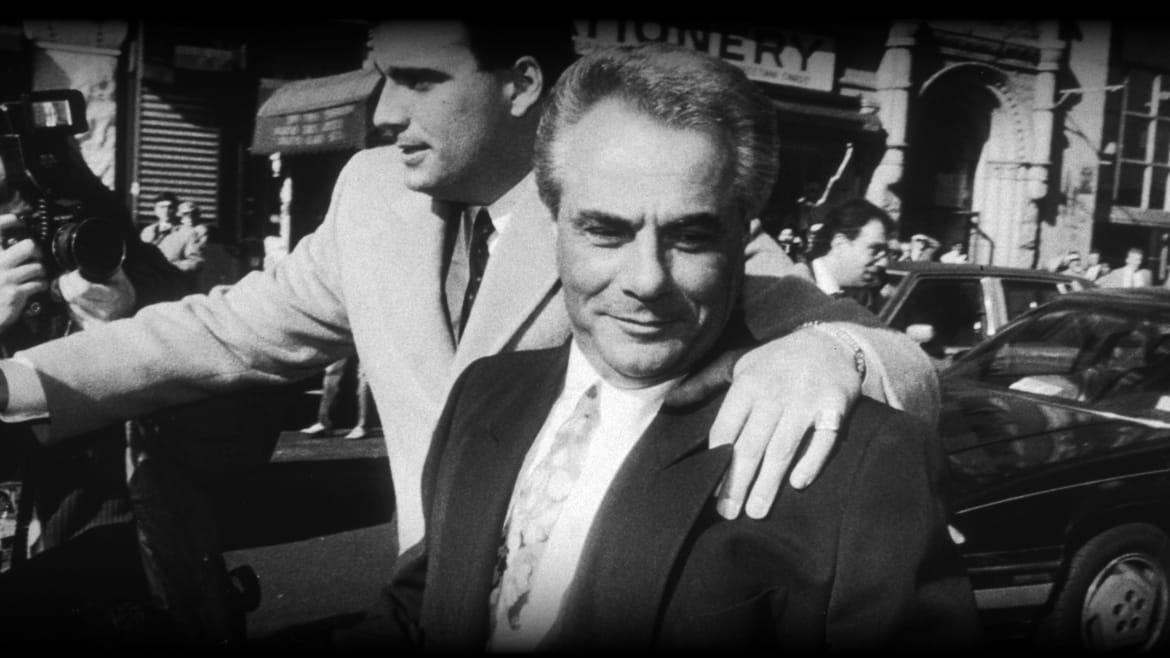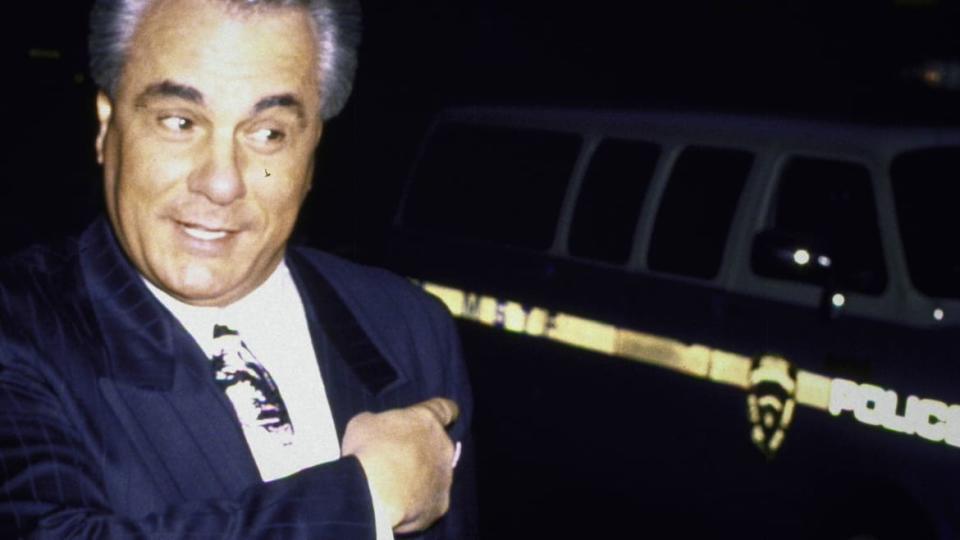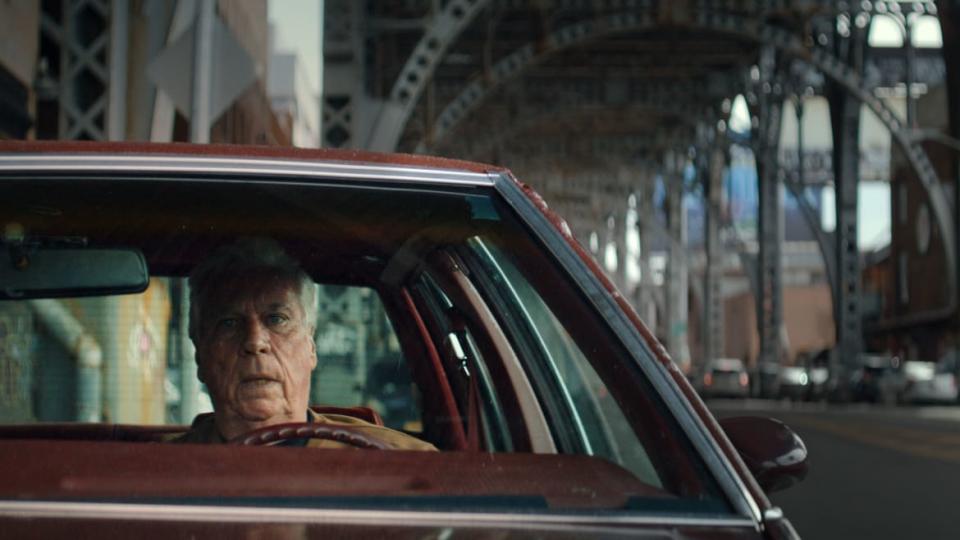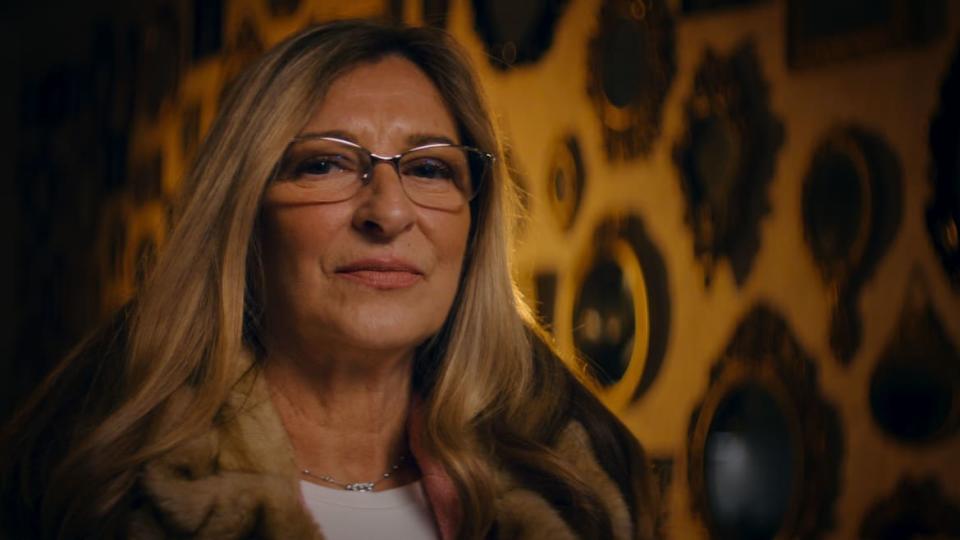The Ruthless Mob Boss Who Dodged the FBI for Years

John Gotti’s designer suits, perfectly coiffed hair, and in-your-face cockiness made him a media darling, as did his reputation—due to three separate courtroom acquittals—as “The Teflon Don.” The Gambino crime family boss was in fact such a 1980s fixture on the news and in the New York City tabloids that he became a national celebrity, complete with Time magazine plastering an Andy Warhol-created portrait of him on its cover, and show business luminaries flocking to his side. According to Netflix’s Get Gotti, those included David Bowie, Anthony Quinn, Mickey Rourke, John Amos (“I just like the way he carries himself”), and Brooke Shields, who one Gotti associate claims—in the docuseries’ most stunning anecdote—gave the godfather her number.
Whether or not this is true, Sebastian Smith’s three-part Get Gotti (Oct. 24) paints its subject as a new type of mob boss who viewed himself as akin to a Hollywood A-lister. Signing autographs for fans, soaking up reporters’ consideration, and flaunting his wealth and power whenever possible, he went out of his way to become a public figure. According to Netflix’s latest, that was both the key to his initial success as leader of the Gambino clan and the reason for his downfall, as he attracted such attention, and put such a giant bullseye on his back, that he united America’s disparate law enforcement agencies while bringing la Cosa Nostra out of the shadows and into the light, where it couldn’t hope to survive.

Get Gotti begins with Gotti, a lifelong member (and eventual “made man”) of the Gambino family, ascending to the throne by ordering the in-broad-daylight Dec. 16, 1985, murder of boss Paul Castellano. From the get-go, it was no secret that Gotti was behind the hit, but knowing things and proving them turned out to be two very different things for the FBI and the Organized Crime Task Force (OCTF). In the wake of this brash assassination, both the feds and the OCTF set their sights on Gotti, albeit separately. Courtesy of interviews with members of both squads, Smith’s docuseries lays out the two organizations’ heated competition to nab the mafioso, which led to a lack of cooperation that, in some cases, allowed their target to walk free.
In the wake of Castellano’s demise, OCTF decided that the best way to get dirt on Gotti was to do what the FBI had been incapable of pulling off: plant a bug in the Bergin Hunt and Fish Club, which functioned as Gotti’s de facto headquarters. Getting into the social club, however, was a difficult task, and through testimonials with OCTF members and sharp dramatic recreations, Get Gotti relays how agents integrated one of their men into the close-knit neighborhood and then employed a cardboard-box ruse to sneak inside. Though they were temporarily halted due to lack of pertinent evidence, OCTF special investigator Gregory Stasiuk’s scrutiny of these recordings ultimately uncovered snippets of Gotti naming his associates and discussing a variety of offenses. At the same time, prosecutors caught a lucky break—in September 1984, Gotti had physically assaulted refrigerator repairman Romual Piecyk during a traffic altercation and was now facing charges that could earn him 15 years behind bars.

Piecyk wouldn’t be the person to bring Gotti down; overtly intimidated by his assailant, he deliberately sabotaged his own testimony, resulting in (as local Fox reporter Eric Shawn recalls) the choice New York Post headline, “I Forgotti.” Department of Justice prosecutor Diane Giacalone was the next to take a shot at the don, using a collection of informants to try to bring him down. Alas, thanks to Gotti’s attorney Bruce Cutler, most of those individuals were made out to be the untrustworthy lowlifes that they were, and Gotti managed to avoid going to jail for murder, illegal gambling, loansharking, and truck hijacking—the first time anyone had beaten a federal RICO case. In response, Gotti bought a boat and named it “Not Guilty,” and he’d hear those words again when he successfully got off for assaulting labor union bigwig John O’Connor. At this point, he truly earned the nickname “The Teflon Don.”
With great publicity came even greater scrutiny, and with regards to Gotti, also greater motivation by oft-humiliated law enforcement personnel to see justice served. Get Gotti goes step by step through the FBI and OCTF’s failed prosecutions while simultaneously having former wise guys Anthony Ruggiano Jr. and Sal Polisi candidly talk about their underworld lives and activities. In those chats (and comments from “Gotti associate” Andrea Giovino), the series can’t help but glorify the mob in a manner similar to 2018’s wretched John Travolta-headlined Gotti. Still, director Smith at least offsets that material with a rigorous focus on those who sought to put Gotti away for life. Their dream became a reality in 1992, when Gotti was convicted courtesy of covert FBI and OCTF recordings (made at the Bergin Hunt and Fish Club and his later center of activities, the Ravenite Social Club), as well as the participation of his right-hand man Sammy “The Bull” Gravano, who chose to turn in evidence after coming to suspect that he was next on his boss’s hit list.

Get Gotti works hard to cast Gotti as a magnetic villain, with WCBS reporter Barbara Nevins Taylor gushing, “John Gotti was a Marvel superhero before there were Marvel movies.” This reference makes no sense, but it’s in keeping with the docuseries’ generally fawning attitude toward him, epitomized by Giovino proclaiming early on, “Who wouldn’t want to be a criminal?” Nestled into its action is an oh-so-brief critique of the media’s culpability in turning Gotti into a star, yet the series is best when investigators and prosecutors get to explain the many creative means by which they attempted to achieve their ends. Moreover, it’s most insightful at its conclusion, when Gotti’s courtroom fortunes turn, thanks to damning and profane recordings that reveal him to be, per Shawn, “a vulgar thug” who had no qualms about executing anyone who stood in his way—thereby reminding us that, for all its superficial glitz and glamor, the mob deserves no celebration.
Get the Daily Beast's biggest scoops and scandals delivered right to your inbox. Sign up now.
Stay informed and gain unlimited access to the Daily Beast's unmatched reporting. Subscribe now.

